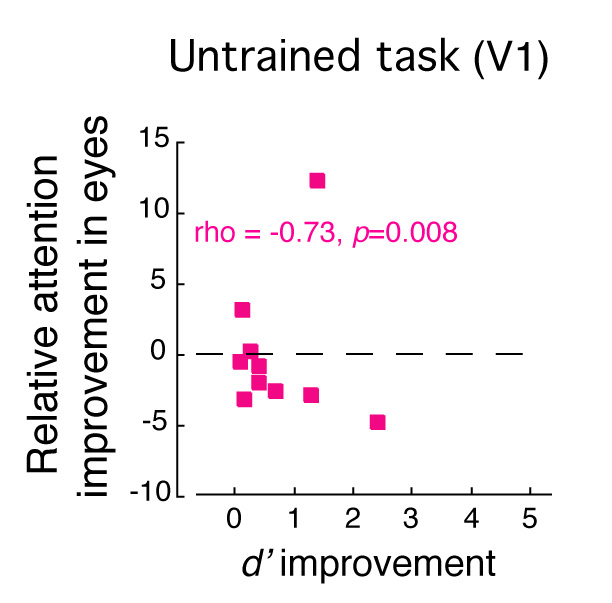Abstract
Long-term and chronic visual suppression to the non-preferred eye in early childhood is a key factor in developing amblyopia, as well as a critical barrier to treat amblyopia. To explore the relationship between selective visual attention and amblyopic suppression and its role in the success of amblyopic training, we used EEG source-imaging to show that training human adults with strabismic and anisometropic amblyopia with dichoptic attention tasks improved attentional modulation of neural populations in the primary visual cortex (V1) and intraparietal sulcus (IPS). We also used psychophysics to show that training reduced interocular suppression along with visual acuity and stereoacuity improvements. Importantly, our results revealed that the reduction of interocular suppression by training was significantly correlated with the improvement of selective visual attention in both training-related and -unrelated tasks in the amblyopic eye, relative to the fellow eye. These findings suggest a relation between interocular suppression and selective visual attention bias between eyes in amblyopic vision, and that dichoptic training with high-attention demand tasks in the amblyopic eye might be an effective way to treat amblyopia.
Journal
Volume
Issue
Year of Publication

